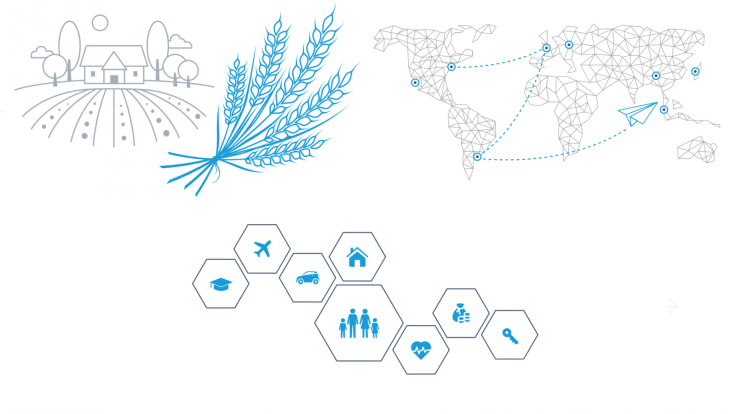Etherisc pushes standard insurable crypto wallet
Etherisc co-founder Stephan Karpischek is looking to create completely new value networks and realign incentives across the whole value chain.

Etherisc's Stephan Karpischek can pinpoint the day and the hour when he and his co-founders decided to establish standardised insurance for all crypto wallets – it was when they saw their own funds removed from a Parity wallet.
"I will never forget that evening," said Karpischek. "We were sitting in a pub in Zug in Crypto Valley and we saw it happening; the first of two multisig wallets drained; frantically trying to get the funds out the second wallet before the attacker. And for us it was clear. After that we got a lot of people asking us, can't we have insurance for this kind of thing."
In the end Karpischek says he was lucky, "because the white hat group was our insurance, so to speak. We appreciate their heroic efforts – but it's nothing you can rely on for your business."
Etherisc is reinventing insurance. It's not about improving some existing processes and creating more efficient, transparent reconciliation. It's about realigning the whole value chain and creating entirely new products and services as a result.
Standardising crypto wallet insurance is one such game-changer. Late last year, Etherisc issued a formal proposal for an Insurable Crypto Wallet (ICW), a multisig wallet which is reliable enough to store values larger than $1m and is insurable at the same time. The proposal thanks Consensys scientist Christian Lundkvist and Ethereum's Vitalik Buterin, and requests feedback from the blockchain community and insurance industry.
Karpischek said: "We want to provide a wallet that is insurable, so if you lose the assets because of a software bug, attack, or some systemic failure, then you are eligible for a refund.
"What we are proposing is basically a specification, so it's not a software application. We are saying, your wallet should comply with certain requirements."
These requirements would ensure a wallet that was used in a specific way in terms of key generation and management; who has access to the wallet; when can payouts be done, so perhaps using features like time-locks for example.
Karpischek said he would be happy to establish contact with insurance providers who would be interested in this business, but stressed the project is not launched with making money in mind; they just want this to happen.
"It's especially important for professional customers, for custodians and funds that hold crypto assets on behalf of their customers. They need to have insurance; they need to be able to get insurance."
Although this is very different from the sort of smart contract-based parametric insurance Etherisc has been looking at, it promises the same kind of seismic potential. It is well known that Coinbase offers insurance, but only for its hot wallets, which is only about 1% or 2% of the funds they are holding. Insurance for all crypto assets – and in particular for cold storage – could drive adoption to a whole new class of people that so far are unable to touch crypto assets.
All told it's been a busy year for Etherisc, which is emerging as one of the most important technologies built on top of Ethereum. Last year at Devcon3 in Cancún they offered a fully compliant flight insurance product. Some large insurance companies, who will not be named, tried to claim bragging rights for being the first to do some sort of insurance on a blockchain (to high profile press fanfare). But in fact Etherisc predates all these efforts – and is technically much more interesting.
"A big question mark for us was, could we get a legal and licensed and fully regulated insurance business running. The Cancún iteration of flight delay was a fully licensed insurance business," said Karpischek.
In this regard, the firm has been working closely with a lot of regulators. This has meant spending some time in Malta, which has a regulatory framework suited to companies innovating in the EU, especially in the insurance sector. Etherisc has also been selected for the FCA's regulatory sandbox in London.
The other jurisdiction where Etherisc is active is Switzerland, where it has established the non-profit Decentralised Insurance Foundation, and is now planning a Decentralised Insurance Protocol (DIP) token generating event.
Karpischek explained this has seen a shift from what was mostly a technology project into a new and uncharted arena. "We are really entering a political sphere," he said, "where it comes down to a question of what kind of financial services do we as a society want to have and want to allow?"

As alluded to, Karpischek and his team are not too excited by the sort of insurance blockchain projects that only want to spruce up the existing infrastructure; neither is he particularly interested in private financial blockchain consortia.
"I am talking public blockchains, always," he said. "We are interested in things that will change the whole landscape.
"Smart contracts don't need to earn money, or be located in big skyscrapers. With Ethereum we have this great opportunity, to build new infrastructure. Now this can be used to model all the existing stuff, like the current financial system.
"But it can also do much more than that. Like creating completely new opportunities and completely new value networks, where people can participate and benefit, and we can realign incentives across the whole value chain.
"That's what excites me and keeps me awake at night."






